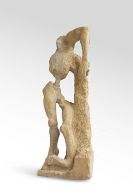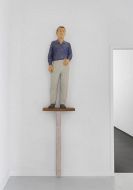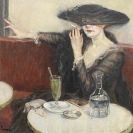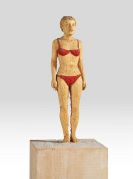
Christian Landenberger
Ebingen
1862 -
Stuttgart
1927
Christian Landenberger was born at Ebingen in the Schwäbische Alb in 1862, the second of nine children of the haulier Christian Adam Landenberger and his wife Anna Maria, née Glunz, and trained from 1879 at the Stuttgart Art School under Jacob Grünenwald and Carl von Häberlin. In 1883 Christian Landenberger continued his studies in Munich, with an interruption, at the Academy, where he stayed until 1887.
Now a freelancer, Christian Landenberger showed work for the first time publicly at the 1890 International Exhibition in the Munich Glass Palace. Two years later Christian Landenberger joined the Munich Secession and would show work regularly at its exhibitions until 1916. In 1895 Landenberger founded a private painting school and taught between 1899 and 1905 at the Munich "Künstlerinnen-Verein" [Ladies' Art Association]. Christian Landenberger was appointed professor for technical drawing at the Stuttgart Academy in 1904.
Christian Landenberger's personal development as an artist started with realistic genre studies in a nuanced dark palette. From the early 1890s his palette lightened and Landenberger abandoned the field of narrative genre painting. What had initially been a tentative association with plein air painting had evolved into a stringently Impressionist style by 1910.
Christian Christian Landenberger founded the tradition of Swabian outdoor painting. Viewed against the backdrop of German Impressionist painting as a whole, Landenberger was, with Fritz von Uhde, the leading south German exponent of the style, second only to Max Liebermann, Max Slevogt and Lovis Corinth, who are associated with Berlin.
Christian Landenberger at first painted in the Black Forest and along the upper reaches of the Danube but by the late 1890s he preferred to work by Lake Ammersee, in Diessen, for instance, where he did most of his "Badende Knaben" ["Boys Bathing"]. Apart from this outdoor motif, Christian Landenberger painted still lifes, interiors and allegorical and religious scenes. Throughout his career Landenberger drew a great deal and his œuvre includes autonomous works as well as drawings that represented formal preparation for paintings or prints.
In his capacity as teacher at the Academy, Christian Landenberger, who died in Stuttgart in 1927, exerted a paramount influence on 20th-century representational painting in Germany.
Would you like to sell a work by Christian Landenberger?
Infos for seller






